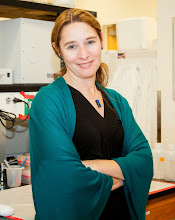It reads like an old joke…someone walks into a bar. But in this case, the audience walks into your talk. They sit, sponge-like, ready to absorb your words of wisdom, right? Wrong! Even students, coerced into attending class, don’t work this way. When the audience walks in they want to know WIIFM1? No, that’s not a rude word-it simply means “what’s in it for me?”
So, what is in it for them? That depends on who “they” are, which means that when we prepare a presentation, we should begin with our specific audience in mind. Each audience has different background knowledge, and if we give a talk either above (or below!) the audience’s level, we risk losing them. They might be impressed with our brilliance, but they probably didn’t understand what we had to say. I once heard a talk by a renowned researcher in human psychophysics deliver a talk to a general audience in his field. However, his talk was really aimed at the three other people in the audience that worked in his precise area of research, while the rest of us struggled to keep up, all the while wondering if there were still cookies left in the lobby. If he’d started with more general background, and presented his data with his audience in mind, we all would have understood his message.
Keeping the audience in mind is even more important when giving a scientific talk to the public. Some consider public talks a “dumbing down” of the science. Personally, I think this is insulting to the audience. A public audience might be extremely intelligent, just not well-versed in the details of our individual fields, just like I’m a biologist who would have a hard time following the minutiae of macroeconomics or particle physics. Is it important for the audience to grasp every step in a cell signaling pathway in order to understand that signaling goes awry in many types of tumors? Does the audience need to understand the derivation of each equation to appreciate the predictions of climate change models? When we begin with the audience in mind we focus on what they need to know in order to understand our core message. What core message, you ask? That’s the subject of the next post…
1Gilman, AD and KE Berg (1995) Get to the Point: How to Say What You Mean and Get What You Want. Kendall/Hunt Publishing, Dubuque, IA.
